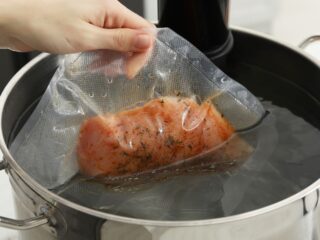
If you own a home with a crawl space, you know the importance of proper maintenance. Unfortunately, one of the biggest issues that can arise in a crawl space is sewage backup. This issue can cause major damage and can even pose a health hazard. Fortunately, there are steps you can take to prevent sewage backup in your crawl space. In this article, we’ll discuss some tips and tricks for preventing sewage backup in your crawl space.
Before we begin discussing tips and tricks for preventing sewage backup in your crawl space, it’s essential to highlight the importance of calling in a professional under house cleaning company in case of a sewage backup. These companies have the equipment and expertise to safely and effectively address the situation and prevent further damage to your home, including crawl space encapsulation. We highly recommend seeking immediate assistance from a specialized company to address sewage backup issues in your crawl space.
Now, let’s dive into some tips and tricks for preventing sewage backup in your crawl space.
Tip #1 Regularly inspect your plumbing
During the inspection, you should look for signs of leaks, corrosion, or damage. Leaks can occur due to worn-out seals, loose fittings, or cracked pipes, and they can cause water damage to your property. Corrosion can happen due to chemical reactions in your plumbing system and can cause weakened pipes that are prone to bursting. Damage to your plumbing can occur due to external factors, such as freezing temperatures or physical damage from construction work.
If you notice any signs of leaks, corrosion, or damage during your inspection, it’s essential to repair them as soon as possible. Delaying repairs can cause the problem to worsen, which can lead to sewage backup in your crawl space.

Tip #2 Install a backwater valve
A backwater valve is a crucial plumbing device designed to prevent sewage backup in your home’s crawl space. It works by automatically shutting off the sewer line in the event of a reverse flow of sewage, ensuring that sewage does not enter your home. This can help you avoid costly repairs and minimize the risk of water damage or health hazards associated with contaminated water. By installing a backwater valve, you can rest assured that your home’s plumbing system is protected and that your family’s health and safety are prioritized.
Tip #3 Keep your drains clear
A sewage backup is a common problem that can be caused by various factors, including blockages in your home’s drains. To prevent this issue, it is essential to keep your drains clear of any debris or buildup that could cause a blockage. One effective way to achieve this is by avoiding pouring grease, oil, or other fats down your drains, as these substances can solidify and create blockages. Additionally, using drain strainers can help catch any hair or other debris that could contribute to a blockage. By taking these preventive measures, you can avoid the inconvenience and potential health hazards associated with sewage backup and maintain a safe and healthy living environment for you and your family.
Tip #4 Avoid flushing non-flushable items

Flushing non-flushable items down your toilet is another common cause of sewage backup, as these items can create blockages in your home’s sewer line. Items such as baby wipes, paper towels, and feminine hygiene products should not be flushed down the toilet as they can clog the pipes and cause sewage backup. To prevent this issue, it is essential to only flush toilet paper and human waste down the toilet. It is also recommended to educate everyone in your household on the importance of properly disposing of non-flushable items in the trash can rather than the toilet. By taking these simple steps, you can help prevent sewage backup, avoid potential health hazards and costly repairs, and maintain a clean and hygienic living environment.
Tip #5 Maintain your septic system
If your home is on a septic system, it’s important to properly maintain it to prevent sewage backup. This includes having your tank pumped regularly, usually every 3-5 years, depending on usage. You should also avoid flushing anything other than toilet paper and human waste down your toilet, as this can cause your tank to fill up more quickly and increase the risk of backup.
Tip #6 Install a sump pump
A crawl space that is prone to flooding can pose a serious threat to the structural integrity of a building as well as to the health of the occupants. Installing a sump pump can be a wise investment, as it can effectively remove any excess water that accumulates in the crawl space. By preventing water damage and eliminating the conditions that support mold and bacterial growth, a sump pump can help ensure a safer and healthier living environment. Regular maintenance and testing of the sump pump can help ensure its effectiveness and prolong its lifespan.
Tip #7 Seal any cracks or holes
Finally, it’s important to make sure that your crawl space is properly sealed to prevent sewage backup. Check for any cracks or holes in your crawl space walls or foundation, and seal them with caulk or other sealants. This will help prevent sewage from seeping into your crawl space and causing damage.
Conclusion
Preventing sewage backup in your crawl space is crucial for maintaining the health and safety of your home. By following these tips and tricks, you can reduce your risk of backup and avoid the damage and expense that can come with it. And if you do experience sewage backup in your crawl space, don’t hesitate to call in a professional under house cleaning company like The Aftercare to help clean up and prevent further damage.





